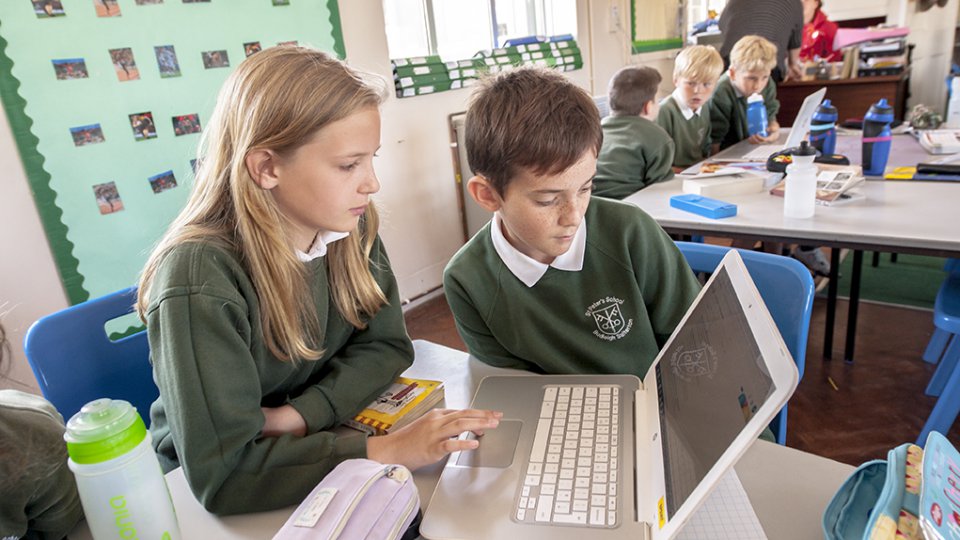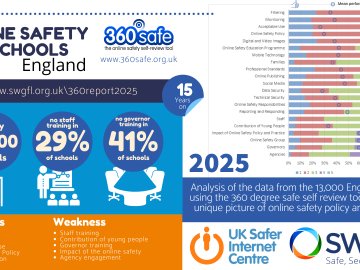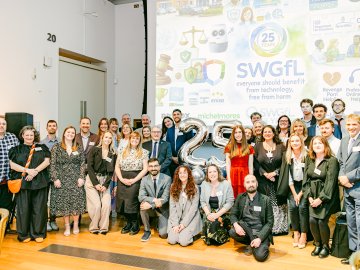Online Safety has become a key and pivotal part of a school’s broader safeguarding commitment.
“Keeping Children Safe in Education 2018”, statutory advice from DfE for schools and colleges, has a detailed focus on online safety in a separate Annexe C. Inspectorates, including Ofsted, Estyn & ETI, have clear references to a school’s ability to safeguard within the online environment; safeguarding is a limiting judgement during Ofsted inspection in England, with leadership and governance held to account for any shortfall in provision.
So where to start? It can look a daunting task when viewed as a whole so the key is breaking the task down into manageable sections and devolve responsibility to those who are most suited (and often most able) to contribute.
Ownership
Online safety has been viewed as the preserve of the ICT department or subject leader. After all it involves computers and technology so why wouldn’t they be responsible? However, this is safeguarding and a requires a much broader literacy. If somebody walked into school with drugs, you wouldn’t assign responsibility to the chemistry department to deal with it so begin with a whole school approach to this driven by a small group that has both breadth and balance.
Use technology itself to assist with devolving that responsibility and spreading the number of stakeholders. 360 Degree Safe from SWGfL is a free online safety self review tool that covers 28 aspects of online safety grouped by Leadership and Management: Infrastructure: Education and Standards. As it’s an online tool, any number of users within a school can register with and contribute to the overall vision. It allows you to rate your maturity for each aspect on a scale of 5 (we have nothing in place) to 1 (aspirational practice); gives you the advice to make the next step and the resource with which to achieve it. Use the tool to track and report on your progress towards creating that better internet experience in your school.
Safe Online Spaces
Creating the right technical environment within school for a better internet to happen can worry schools; whilst schools in the SWGfL 360 annual report say filtering is one of their strongest aspects, it can often be relatively unsophisticated and undifferentiated. Schools face a dilemma in providing safe online environments for children whilst at the same time encouraging effective and appropriate use of online resources that are age-appropriate. There is the perception that loosening filtering might leave a school open to challenge or litigation: yet Ofsted themselves in their Safe Use of New Technologies 2010 report concluded that schools who lock everything down through filtering do not provide an environment where risk is managed for young people to learn how to stay safe. Very often the filters shift the problem elsewhere: if students can’t get the resource they need in school they will wait until they get home. Staff too for that matter!
Plan an infrastructure that allows differentiated user access to appropriate resource. It may take some initial investment but the results are worth it. Understand risk and map the potential risk for each age demographic within school. Find the balance between risk and risks that may harm and weigh all those risks off against the pedagogical efficacy of broadening access. Establish expectations from all users about what having more open access means; the responsibilities required and what sanctions users can expect.
Expect things to occasionally go wrong but ensure your incident management routines are clear and well communicated so that responses are consistent and congruent with other behavioural strategies within school. Remember, “Keeping Children Safe in Education 2018” requires schools to provide “appropriate filtering and monitoring”. The UK Safer Internet Centre has produced clear advice for education settings HERE.
Report Issues
Know how and when to escalate issues that you find difficult to ameliorate as a school. You may have enough existing expertise within your own staff to manage most of the day-to-day incidents but occasionally there may be more serious cases where you will want to seek advice from the police, local authority or external agencies. The UK Safer Internet Centre Professionals Online Safety Helpline is a free service provided for children’s professionals. Laura Higgins, Helpline Manager explains “At the Helpline we aim to give practical advice to equip staff to respond appropriately, and where necessary can assist in resolving problems by liaising with industry to get harmful content such as bullying comments removed. In particular, an issue we see regularly is where staff themselves become victims of criticism or harmful comments from parents in online arenas. Our expertise in this area means we are able to give guidance on what can be done to protect your professional and organisational reputation. For advice please contact the Professionals Online Safety Helpline.”
Effective Policy
There is an obvious importance for schools to have clear policy, guidance and expectations around how internet should be used but this is only effective if it is clearly communicated and everyone “gets it”. Have the salient bullet points dotted around where technology is used; on log-in screens or in school diaries. A constant drip-feed of expectations proves much more effective than some dusty tome awaiting inspection.
Safeguarding Intelligence
Reporting incidents is generally agreed to be an effective way to improve the online experience of the majority; not only does it provide a clear and effective route to share concerns and find support but reporting also reduces negative behaviour by confronting perpetrators in a consistent way.
Giving routes for “bystanders” to report incidents anonymously without damaging their reputation or compromising their own security is a proven effective measure in decreasing bullying significantly within an online community. The more types of reporting routes there are, the more likely they are to be used: peer reporting through peer support; bully boxes; nominated staff; anonymous online reporting mechanisms; report abuse buttons.
In addition to active reporting routes, a school may wish to gather passive intelligence from social media when the school is mentioned or referenced. This can be achieved through setting up alerts that arrive at a nominated email address and can be a useful intervention in picking up aggressive behaviour or bullying in open social media chatter before it has been actively reported, particularly if a member of staff or school is being targeted. SWGfL Alerts is part of the BOOST suite of online safety tools and does exactly that.
If you are either beginning your online safety strategy or are on the journey, 360 Degree Safe, the multi-award winning online safety self review tool from SWGfL, would be robust choice.
After all, everybody needs a little help sometimes.






